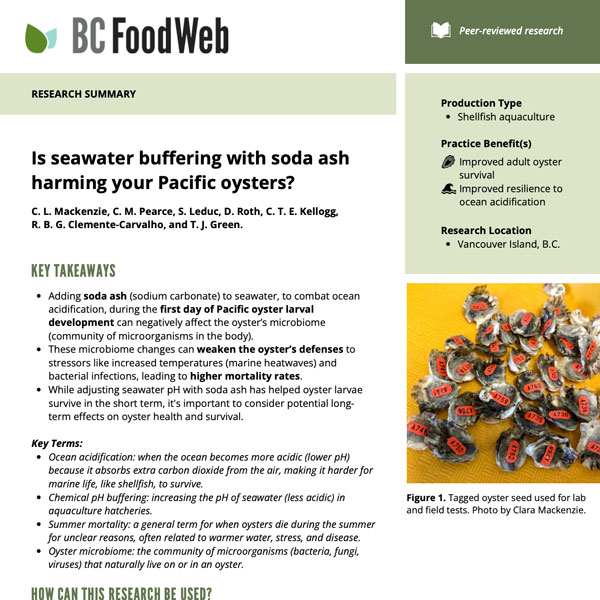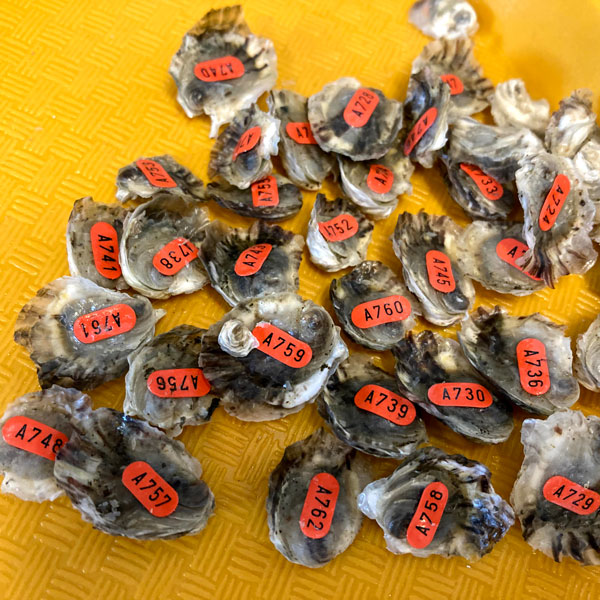Is seawater buffering with soda ash harming your Pacific oysters?
Introduction
The goal of this study was to evaluate if adding soda ash to seawater (to combat ocean acidification) during Pacific oyster larval production is causing problems in spat and adult stages.
Shellfish growers around the world continue to face mass mortality events during summer months with marine heatwaves and the spread of bacteria and viruses. Understanding how soda ash impacts oyster health beyond the larval stage can help the shellfish farming industry make informed decisions around oyster disease and climate change challenges.
About this Brief
This brief was prepared by Juliana Cao from the BC Food Web team with the help of Tim Green and is based on the following scientific journal article:
- Mackenzie, C. L., Pearce, C. M., Leduc, S., Roth, D., Kellogg, C. T. E., Clemente-Carvalho, R. B. G., & Green, T. J. (2022). Impacts of seawater pH buffering on the larval microbiome and carry-over effects on later-life disease susceptibility in Pacific oysters. Applied and Environmental Microbiology, 88(22). https://doi.org/10.1128/aem.01654-22
Key Findings
- Adding soda ash (sodium carbonate) to seawater, to combat ocean acidification, during the first day of Pacific oyster larval development can negatively affect the oyster’s microbiome (community of microorganisms in the body).
- These microbiome changes can weaken the oyster’s defenses to stressors like increased temperatures (marine heatwaves) and bacterial infections, leading to higher mortality rates.
- While adjusting seawater pH with soda ash has helped oyster larvae survive in the short term, it's important to consider potential longterm effects on oyster health and survival.



